Young excellence, promotion battles, and a happy farewell: The Australian team of the week from players around the globe
Even though St.Pauli ultimately lost a high-scoring affair, Jackson Irvine was a standout, as well as scoring a late goal.

Amazing thoughts enter the mind in World Cup years. Otherwise sensible people turn into parrots peddling unreasonable and unjustified levels of hope and optimism. And I am no exception.
Let me preface this article by saying that this Socceroo is fully aware on a rational level that Bert van Marwijk’s team are rank underdogs in the tournament and realistically are going up against two clearly superior teams and one slightly better team.
Logically I can’t see Australia nullifying Christian Eriksen in the Denmark game that (mathematically) we need to draw to go through. Having watched Denmark’s 5-1 qualifier in Dublin, Eriksen should make mincemeat of the Socceroo back four. He’s also the best player in our group and is in inconveniently prolific form.
But this is a World Cup year! We’re going there to find ways to win and to pour litres of hope-petrol onto a tiny ember of probability.
With that in mind, I watch football now for flecks of gold that might suggest a tactical nugget for the Socceroos, and the Champions League quarter-finals, in particular the unlikely second-leg comebacks of Juventus and Roma, were like Fort Knox with an open gate for Bert van Marwijk.

Juventus are back in the winner’s circle. (AFP Photo/MArco Bertorello)
Although both teams lined up in different formations and the outcome wasn’t the same (Juve lost to a late penality whereas Roma pulled off an amazing win) the gameplans both teams used to put three goals past their more fancied opponents – Real Madrid and Barcelona – were Italian tactical genius.
The comebacks were required after the first legs where both Italian teams were nervous, tentative and allowed the El Clasico megaliths to control and implement their styles. But in the second legs both Juve and Roma implemented near-perfect tactical turnarounds, changing their formations and approaches to harass and batter their first-leg dominators.
Neither side allowed their Spanish opponent to settle into their normal game (with the exception of the last 15 or so minutes in the Juve game) while playing to their own strengths spectacularly. In both games the Italians identified minor imperfections in their opponents and fixed in on those wrinkles like a specialist at Pond’s Institute.
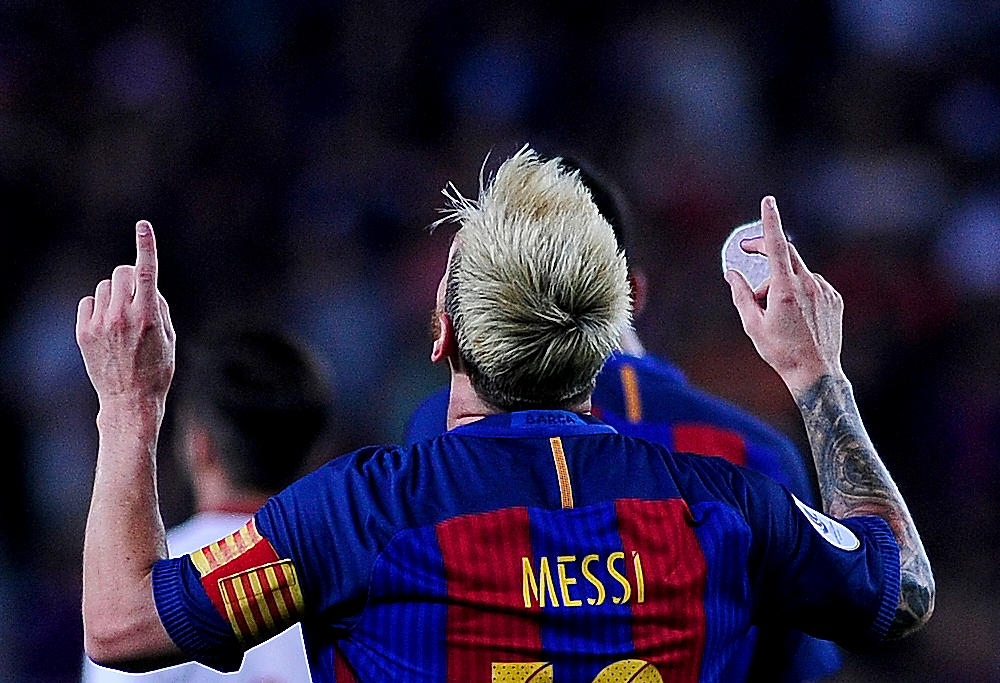
(Joan Cros Garcia/Corbis via Getty Images)
The results themselves offer some hope for a team like the Socceroos. These were underdogs who found ways to score three goals against better opponents. But there is more to these games on a tactical level that Bert can learn (and steal) from.
Firstly and immediately Barca and Real both feature Socceroo opponents in France’s two central defenders, Samuel Umtiti (Barcelona) and Raphael Varane (Real).
The principal insight for Bert from Roma’s win over Barcelona was the pressure Umtiti faced on the ball. Roma’s fixation on Umtiti led to a formation switch from a back four to a three to start with two strikers, with one of these (Patrik Schick) there just to pressure Umtiti.
Effectively Roma forfeited a defender to press doggedly and sweat Umtiti. Suddenly a team once considered the greatest of all time in possession became a panicky mess, starting with Umtiti.
[latest_videos_strip category=”football” name=”Football”]
But Juve’s effort against Real represents a more direct and compelling tactical kaleidoscope for Bert as he looks for the winning Socceroo formula. Okay sure, they didn’t win the tie, but taking a three-goal deficit into the Bernabeu and winning 3-1 was a tactical masterclass from Juve’s manager Massimo Allegri.
The real genius of his game plan was its simplicity. Like Roma, his press was high and intense and allowed his central midfield trio of Miralem Pjanic, Blaise Matuidi and Sami Khedira to regain possession in damaging areas.
Juve overloaded Real with three central midfielders, and the press and pressure on Real’s defenders (including Raphaal Varane) allowed Juve to win back the ball in their half or get back and settle into their defensive shape to choke the space that Real key playmaker Isco likes to occupy.
This was the beauty and simple majesty of Juve’s approach. A fluid central three allowed for expert transition passers, runs into the box and a stronger screen for the back four.
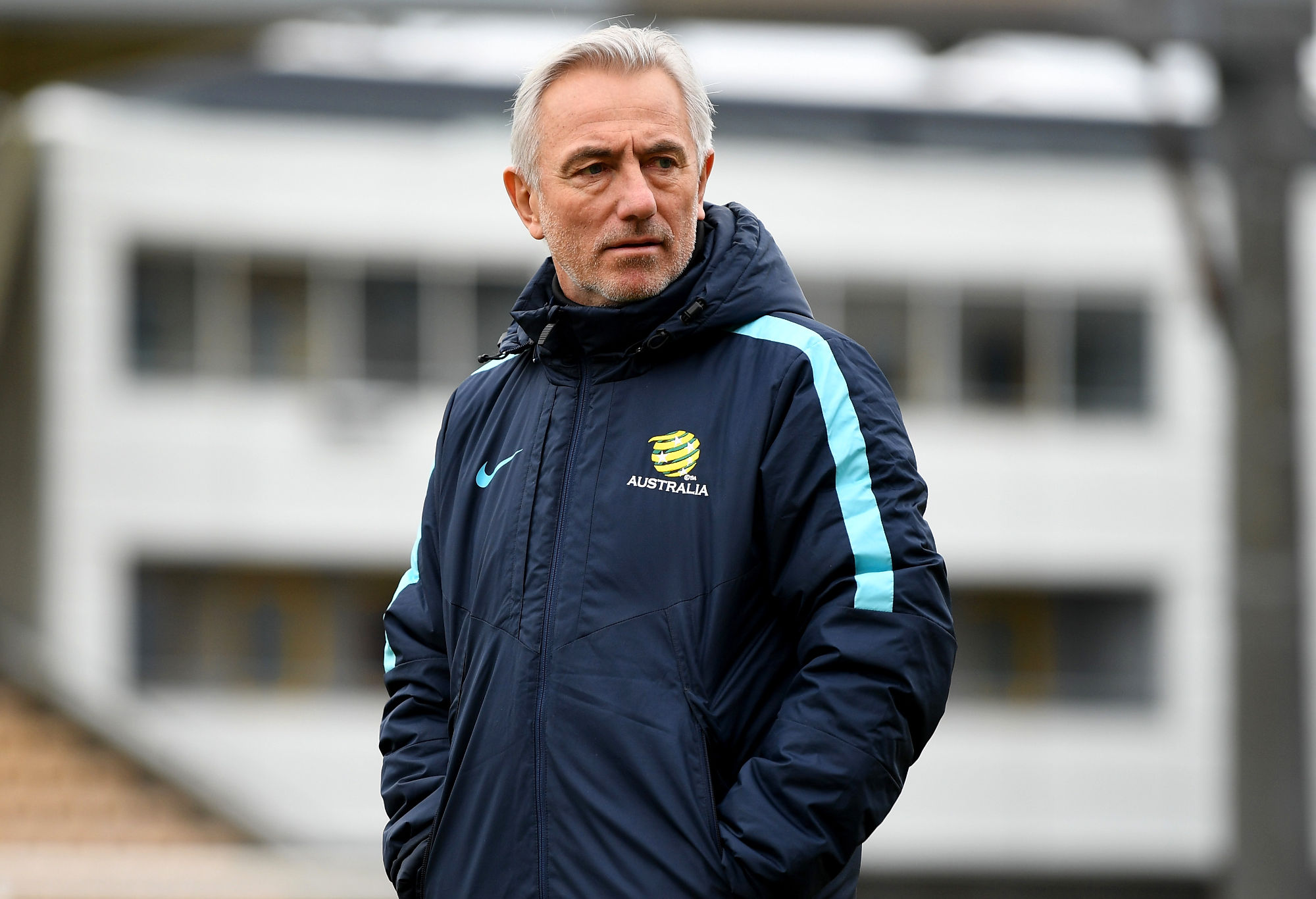
(Michael Regan/Getty Images)
Clutching at World Cup straws, with the right amount of squinting, pre-match lubrication and sheer fan-hardened stupidity the Juve midfield three sort of resembles the Socceroos options.
Pjanic is Juve’s Aaron Mooy: brilliant on the ball playing both long and short passes, including the ability to get back and occupy space (and tackle) in a defensive playmaker role.
Like Mooy at Huddersfield, Pjanic is rarely Juve’s deepest-lying playmaker but can play a role in the defensive shape.
Matuidi is Mass Luongo: a gut-runner who can make tackles but will pop up in the box (as he did in this game) if afforded protection behind him.
Okay we don’t have a Khedira. He is patient on the ball and a brilliant spatial player, like a Mile Jedinak in his prime – however, Mile has not been in his prime for an entire World Cup cycle now.
Mile, sadly, has declined at an alarming rate for the Socceroos. His two games thus far under Bert were a Greek tragedy of lost possession and stunted movement. His position in teams seems now to have been pre-paid by his efforts in two legs against Honduras. Sadly those efforts were flattered immensely by the Hondurans. Honduras must surely have been the worst opponent we have faced in final round qualifying since we left Oceania.
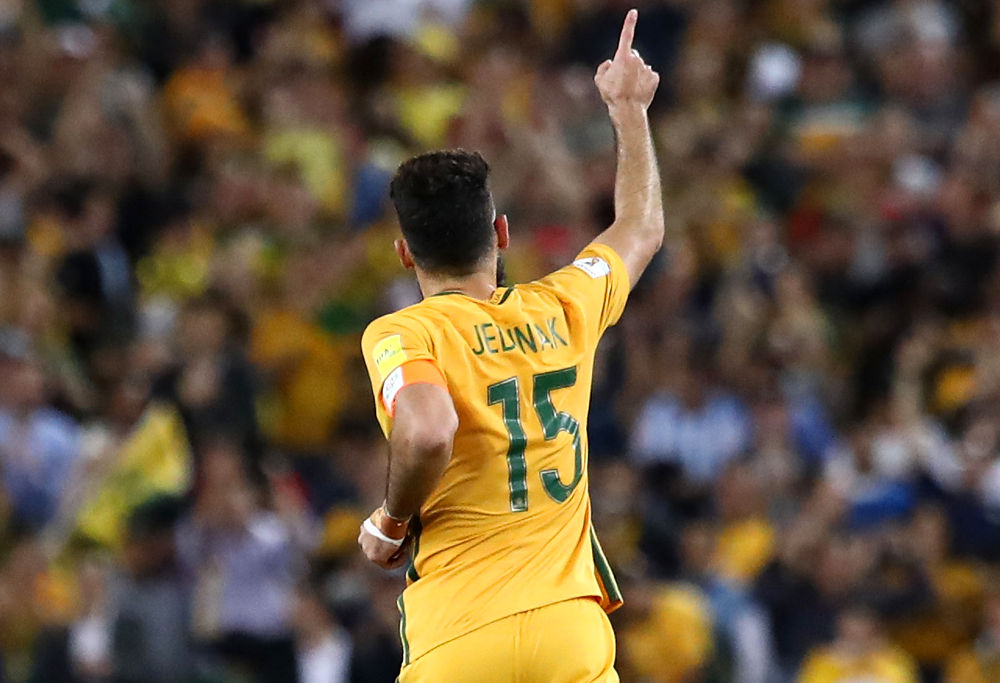
(Cameron J Spencer/Getty Images)
I propose that our Khedira is Trent Sainsbury. Trent is neither Rio Ferdinand or Fernandinho, but he is sharp on the ball and an excellent passer with the skill set and requisite speed to drop between the central defenders or push up and support our transitions through his intelligent passing – and, conveniently, in his two games for Grasshopper he has been played in this role with great success.
In a group where our greatest challenges will come from players who dominate the area between the lines – think Eriksen and Antoinne Griezmann – we will need a midfielder who can man-mark and screen for Mass and Mooy to allow them to take some risks going forward.
If France persists with starting Giroud up front, the extra height and muscle of Sainsbury from midfield can help mitigate their dead-ball threat. The 2018 vintages of Mile and Mark Milligan lack the requisite smarts, speed or ball playing ability to play this essential defensive and transition role.
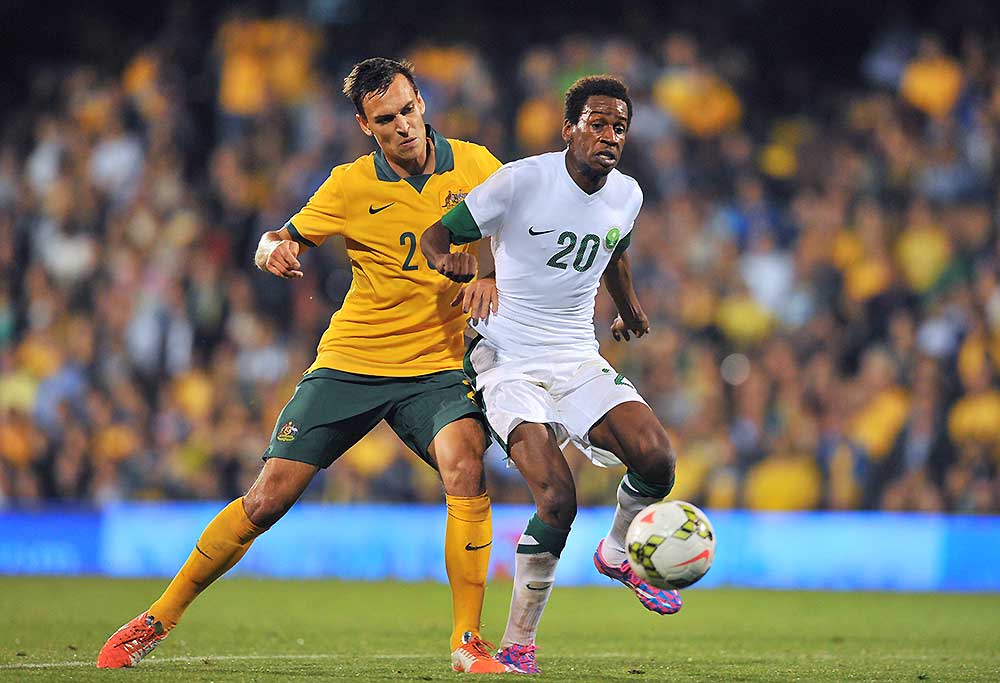
(AFP Photo/Glyn Kirk)
With a midfield three that plays to the strengths of the squad by allowing Mooy and Luongo some forward licence, the front three becomes the next challenge. Here Juve’s structure represents another great tactical insight for armchair-Berts.
Gonzalo Higuain lined up in this Champions League game, as he often does, as the Juve number nine. However, Higuain’s great skill is his ability to receive the ball in half spaces and exploit this space by bringing the players around him.
This is Socceroo parlance for Tom Rogic. Tom’s ability to hold possession with his back to goal and to bring other players into the play is unparalleled at national-team level since Mark Viduka in 2006. He is also our only real live-ball goal threat with his wicked left foot, and therefore he should be used as close to goal as possible.
For the entirety of this World Cup campaign Ange struggled with fitting Rogic and Mooy – our two best players – into the same team and often left one out because his structure wouldn’t permit both. Allegri would never do this. The Italian approach is to select a team and formation that maximises the utility of the players in your squad.
A formation that has Rogic accepting the second ball in a quick transition would be essential for a Socceroos team that in the two games under Bert moved from defence quicker and more directly. Matching the Juve model means playing Rogic as a false nine (or a 9.5, to quote Robin van Persie). If we consider who he is supplanting leading the attack – Tomi Juric – there is no great sacrifice in terms of expected goals or likelihood to score.
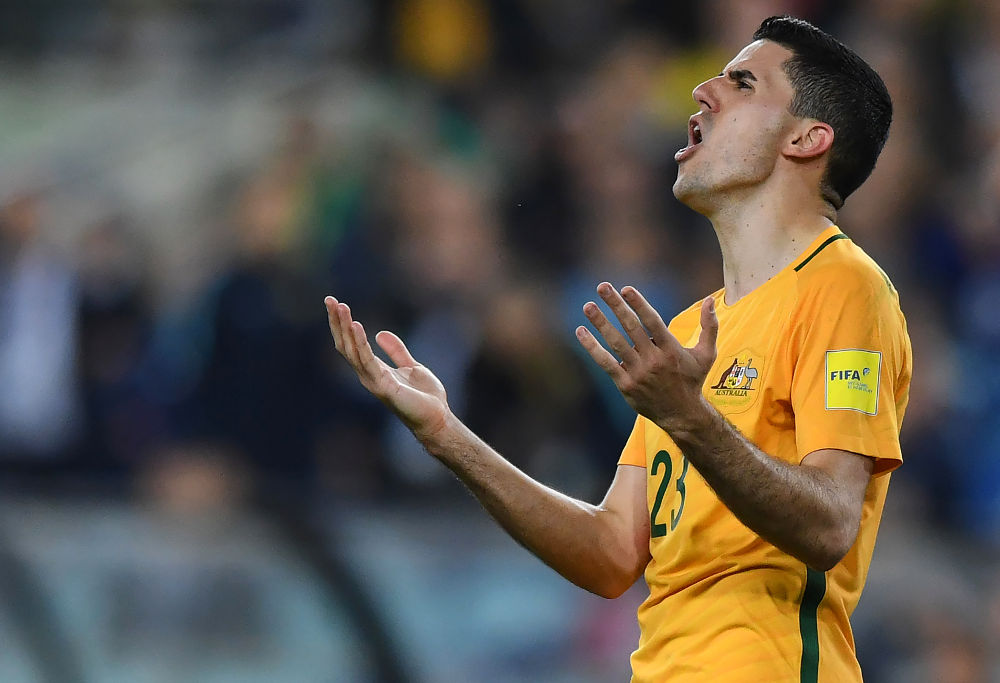
(AAP Image/David Moir)
The rest of the Socceroos front three is also hidden in plain sight within Juve tactics and will probably be the longest bow drawn in this article. I am talking about Mario Mandzukic, the brace hero who exploited Real’s weaknesses so simply and so wonderfully that Allegri must have been thinking that elite coaching was an easy game.
Mandzukic is a reformed central striker, selected on the left of front three by Juve to exploit (usually) short full backs with his height (which he did) and to be their go-to for long outlet balls.
Our Mandzukic, I propose here, is Jackson Irvine. In Bert’s two games in charge we liked to transition quickly, often using long aerial balls to do that. His selection of Irvine at the number ten role against Norway underlined this, as every transition pass got played to him.
In the Colombia game this got scrambled and we saw Mat Leckie and Rogic take aerial balls and both struggled with them. Irvine represents the player who can present high in transition and then tuck in for our best fullback – Aziz Behich – to push up on the left and offer width.
If we attack down the right, Irvine can utilise his running power to get to the back post to exploit short fullbacks, as Mandzukic did against Real with awesome effect. Let’s not forget that the only goal scored for Bert was from Irvine’s head.

(AP Photo/Moises Castillo)
With Jackson on the left, our right side would continue to be the dominion of Mat Leckie, especially as he can drive to the line to set up those balls to the back post. And as right back is our major positional weakness, Leckie can use his positional conscientiousness (beaten into him from years in Germany) to drop back and support either Josh Risdon or a converted centreback like Milos Degenek.
And if you’re still playing along, what I am proposing is the Socceroos try a 4-3-3, moving to a 4-4-2 or 4-5-1 in defence. It’s a minor adjustment to Bert’s 4-2-3-1 by adding an anchored defensive midfielder to allow Mooy and Luongo to push forward with some licence, creating two blocks of five (where, if Behich gets forward one of Mooy or Luongo can push wide to cover that space).
So, yes, I am saying we can do this, just like Juve and Roma did. We’ve fitted all our central mids into the same team, moved our best natural shooter (Rogic) in more dangerous positions and have Irvine jumping over fullbacks to get onto those Leckie or Mooy chips into the box!
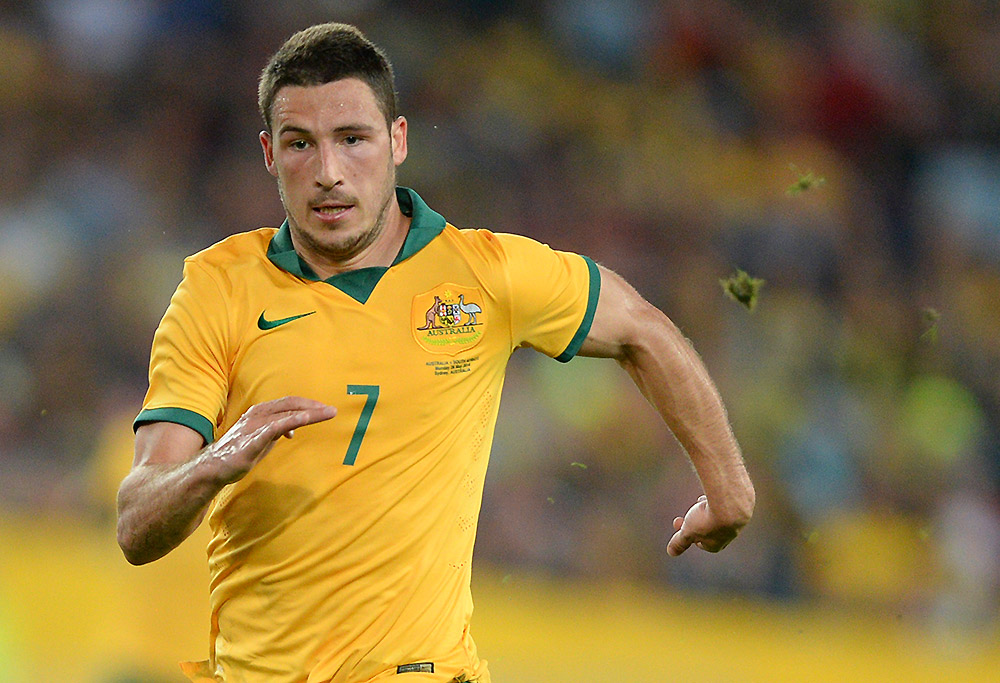
(AAP Image/Lukas Coch)
In a country as small as ours, our tactics must be geared around getting the most out of the players we can actually select. In a team where our best club players are central midfielders, attacking mids or box-to-box runners with no standout strikers we need to focus on overloading midfield and giving these runners licence to push in and score.
Pressing hard inside our half allows our central mids to block passing lanes and win back possession in good areas or drop back to screen the back four. And if we have genuine weapons, like Mooy’s passing range, Irvine’s height and Rogic’s left foot, we need to find ways to use all of them, not leave one or two on the bench because they don’t fit a structure.
Nine, ten, eight or six are just numbers to Italian masterminds, as we famously observed in last week’s Champions League quarter-finals. The only number that matters in football is the scoreline at the end of the game.